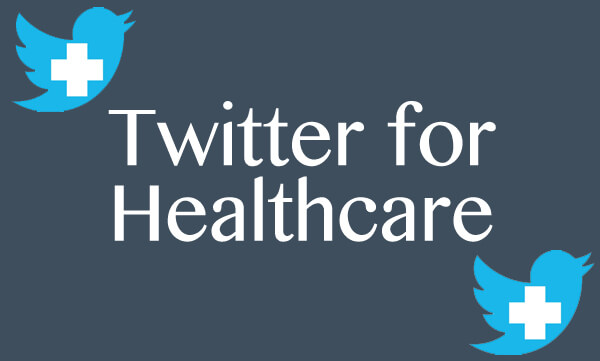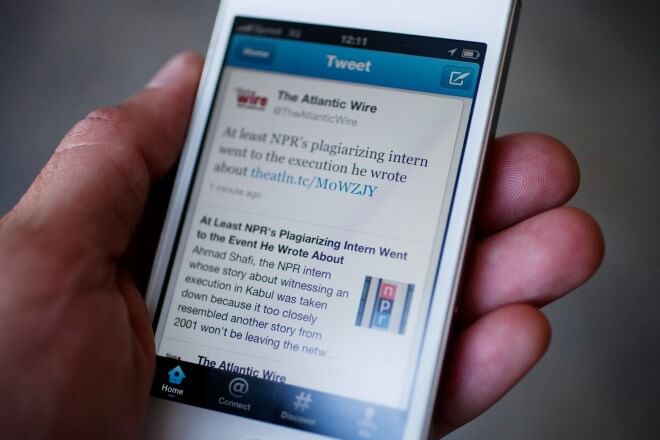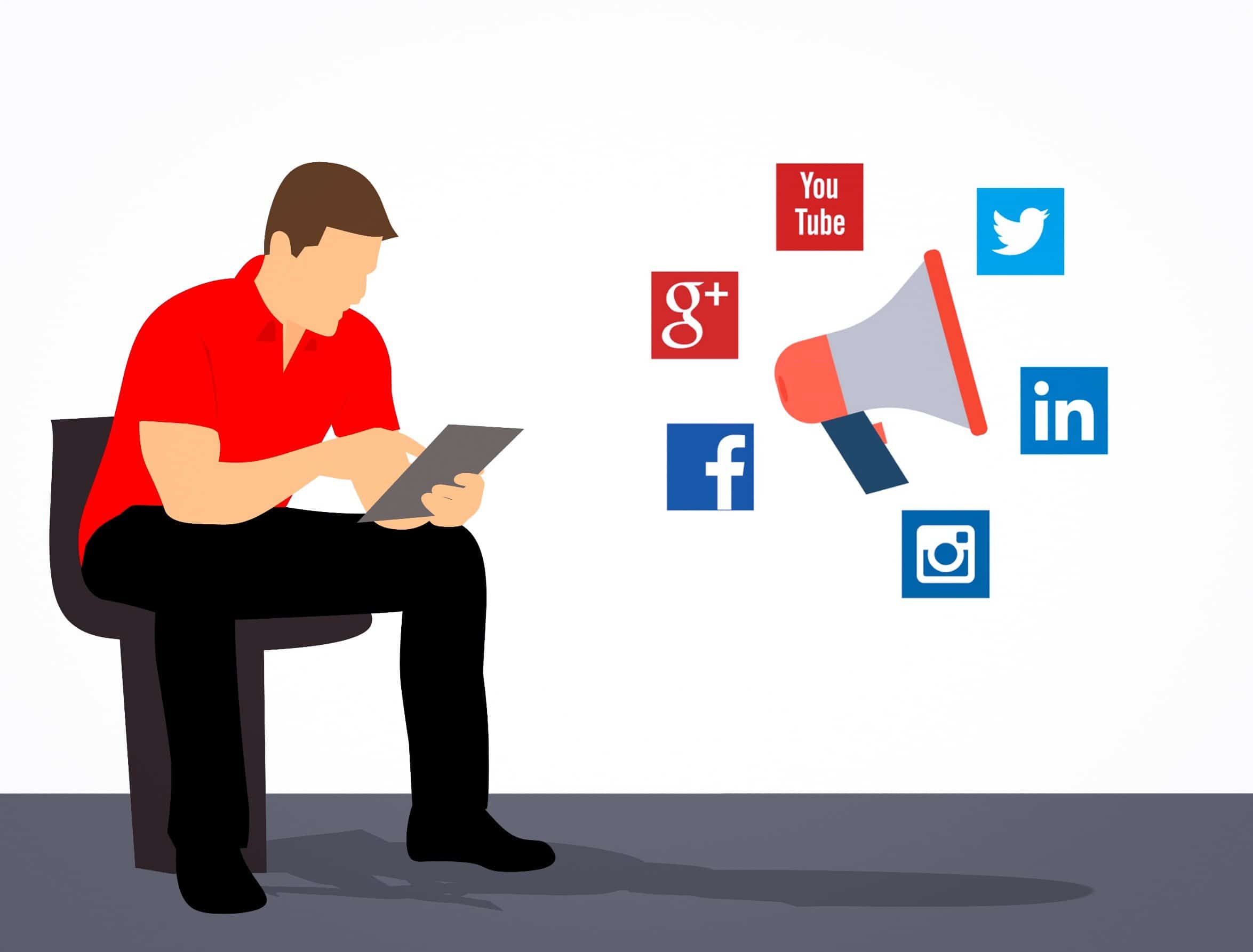With Twitter going public this year, it has over 100 million daily active users and 231.7 million monthly active users worldwide to date. There are lots of opportunities for conversation on the platform about almost every topic known to man, but where does healthcare fit in on Twitter as an industry?
The very nature of healthcare requires many regulations, which is often a barrier for medical professionals looking to utilize the platform, but it certainly doesn’t merit not using the social media channel to communicate with others. As of today, 31% of health care professionals use social media for professional networking which is only going to grow as one of the many effective uses of Twitter for medical practitioners.
Using Twitter and other social channels is also important to patients, since 41% of people say social media would affect their choice of a specific doctor, hospital or medical facility and 30% of adults say they are likely to share information about their health on social media sites with other patients.
Continuing ongoing communication with your audience on Twitter can have long-term benefits for you as a professional and for your healthcare organization, as well as a tangible impact on your patients. This positive impact can occur when the platform is used correctly to develop relationships and spread worthwhile information to your audience of colleagues, experts, patients and industry leaders.
Here’s how you and your organization should be using Twitter for healthcare effectively:
Spread Quality Health Related Information: Both Curated & Original
Twitter allows its users to become a source of knowledge and expertise about certain topics and in this case, you should be tweeting about your healthcare related information. The goals of a medical professional on Twitter are to build a following of other people and organizations that care about your messaging and associate your expertise with your account.
It isn’t the overall number of followers that matter, but the number of your followers who actually care about what you’re tweeting. If you’re a dentist, then tweet content about how to maintain your smile in between visits or if you’re a nutritionist, tweet tips about shopping for and cooking healthy meals. Tweet the expertise that you know well, to give your audience of like-minded individuals the information they’ve come to expect from your account.
54% patients experience 1 or more errors in medication reconciliation at the hospital http://t.co/Z8BWkUp0y8 via @medpagetoday
— Dave Walker (@drwalker_rph) December 13, 2013
The content you’re sharing on Twitter should be both original, as well as the curated content from others. Share your own quick tips, links to your blog posts, news about your industry and more original content that you’ve created based on your expertise. The other content you’re sharing on Twitter should be the relevant content from others in your industry, friends, partners and followers.
Tweeting a healthy balance of your content and the content of others is the best approach to Twitter because no one wants to hear you talk only about yourself in real life and the same goes for your conduct on Twitter. The content you’re sharing from others should always be relevant to the topics you’re typically covering in healthcare professionally on Twitter and occasionally your personal interests as well.
Share the articles of others, retweet the tweets of others in the healthcare industry that you find valuable, comment on the tweets and article links of others in your network and aim to share the quality content you discover on Twitter. This approach helps vary the content you’re sharing with your audience, as well as build a rapport with others in your industry on Twitter.
Use the Right Hashtags for Healthcare
Hashtags on Twitter are often misunderstood by many, resulting in a common misuse of this helpful tool for content discovery. Twitter hashtags for healthcare can be used to help categorize your content on a consistent basis, extend the reach of your tweets with others looking for the type of content you’re tweeting and help expand your audience with like-minded individuals all with the use of # symbol for a word or phrase.
A3 I effusively thank friends who host parties w/ lots of fruits & veggies on the menu. I do the same so people have choices. #HealthTalk
— Lisa Oldson MD (@LisaOldson) December 9, 2013
As a Twitter user, it’s important to use no more than three hashtags per tweet to avoid overusing this helpful technique. The hashtags you’re using should be a combination of hashtags used in your industry by others, as well as a few hashtags created by you specifically to categorize your content.
Some widely used healthcare related hashtags are:
#Patient
#PatientExperience
#HealthTalk
#medicalbilling
#patientengagement
#nurses
#digitalhealth
#hcsm
#hcr
#HealthReform
#Healthcosts
#occupyhealthcare
#healthcareforall
#meaningfuluse
#ACO
#ICD10
#hcsmin
#ahima
#HIMSS
#physician
#MedEd
These hashtags should be added to relevant tweets about that subject area, so they appear with other tweets using the hashtags pulled together under one consistent topic. For example, if you wrote a blog post about how you think the healthcare industry can look to improve a patient’s experience in 2014; tweet a link to that blog post using the hashtag #patientexperience to best categorize the post.
When creating original hashtags of your own, keep them very simple and easy to understand. Avoid stringing too many words together, while focusing on the creation oF hashtags that you’ll look to use again in the future as opposed to one-offs that you won’t have use for again.
Negative Consequences of work hour rules? via @nytimes Are Today’s New Surgeons Unprepared? http://t.co/u6YoGinF5q #meded #ptsafety
— Carol DeFilippis (@CarolADeF) December 13, 2013
When it comes to Twitter hashtags in general, stick to using the same 10-15 hashtags overtime to create a consistent flow and organization to all your healthcare content shared on Twitter. After consistently tweeting using certain hashtags, your audience will begin to expect their use from your account and be on the lookout for certain series of content you regularly tweet.
Hashtags used by others can help you find engaging content from others on the topics you’re most interested about, which makes the process of content curation on Twitter much more effective.
For information on the proper usage of Twitter hashtags, view this infographic for more insights on the subject.
Communicate with Others Frequently
By sharing the content of others in your industry on a regular basis you’re communicating with them and building a long lasting rapport. Sharing the content of others on Twitter is one of the most valuable things you can do when interacting on the network, but it doesn’t have to stop there.
When other voices in the healthcare industry are tweeting, it’s important to interact with their tweets by leaving a comment, thanking them for sharing the resources, asking a question, refuting their position constructively and more to drive a more in-depth one on one conversation. It is easier for another medical professional to ignore the fact you’re tweeting their content or retweeting their tweets, but more difficult to ignore a direct mention which is a call for one-to-one conversation.
@SamServ10 Thanks for watching. Agree that change is hard. That’s why we must start now, with patients help @TEDx http://t.co/T1lU8WvSeb
— Leana S. Wen MD (@DrLeanaWen) December 12, 2013
Interact with their tweets and ask questions to build an ongoing dialogue with other members of your industry within healthcare. Most importantly, try to take some of these relationships you’re building on Twitter offline into the real world. Invite some of the medical professionals you’re tweeting with the most to meet with you for coffee, have lunch, grab a drink at a bar or even attend a networking event together.
Meeting one of your connections face-to-face helps establish a long-term relationship that may not of been as strong without the in-person meeting. You can continue to maintain your professional relationship overtime with new and existing contacts through Twitter.
Unfortunately, it isn’t possible to meet with all of your followers on Twitter since it’s likely you don’t live in the same physical location. Using Twitter chats is another alternative way to connect with healthcare professionals interested in discussing the industry and other important professional developments.
FDA pays $182,814 for social media monitoring http://t.co/Kc5ewmW51r #hcsm #socpharm
— Glen Gilmore #SocBiz (@GlenGilmore) September 30, 2013
A Twitter chat is a live discussion that occurs for a half-hour to an hour at the same time every week, moderated by a host on Twitter and centered on a particular topic in the form of a hashtag allowing anyone that is interested in participating to follow. Twitter chats are wonderful networking opportunities for your specific medical focus since each chat is centered on a specific subject area.
Therefore, when you’re participating in the chat, you’re more likely to be seen by and interact with individuals that share an interest with you as a medical professional. These connections will hopefully lead to more opportunities to connect with others, build thought leadership and build greater visibility for your practice.
Of the thousands of Twitter chats happening on Twitter everyday, here are some healthcare chats to consider checking out:
1) #MDChat — Tuesday 9 p.m. ET
Moderator: Phil Baumann via @MD_Chat
2) #meddevice — Wednesday, 4 p.m. ET
Moderator: Joe Hage via @MedicalMarcom
3) #HITsm — Friday, noon ET
Health Information Technology Social Media
Moderator: Chad Johnson via @HealthStandards
4) #SocPharm — first Wednesday of each month, 8 p.m. ET
Biopharmaceutical Marketing and Social Media
Moderator: Eileen O’Brien via @eileenobrien
For a more extensive list of Twitter chats broken up by date, check here.
Follow the Rules as a Twitter User & a Healthcare Professional
One of the most important rules for using Twitter as a healthcare professional is respecting the rules and regulations of your position. First and foremost, upholding HIPAA by respecting the privacy of your patients is critical for your ongoing success with social media.
Do not directly reference anyone as a patient when using Twitter or a similar tool, since by even recognizing someone as a patient you’re breaking confidentiality regulations.
It is also important to avoid administering clinical advice on Twitter or other social platforms to individuals. It is always recommended that you refer them to set up an appointment at your organization or with another qualified medical professional for proper consultation.
Besides the healthcare related concerns, there are Twitter rules to follow as well to ensure you’re making the most of the platform while not negatively affecting yourself or others. Don’t tweet for the sake of tweeting, only share content on Twitter that’s going to bring value to your audience.
Tweet when people are most likely to see your content like at 9am, 12pm, 3pm and 5pm. Use scheduling tools like HootSuite or Buffer app to help improve your ability to deliver engaging content on Twitter, while saving time for one-on-one conversations as opposed to the organization of when you’ll be tweeting.
Like mentioned above, don’t overuse hashtags especially since it is often one of the most common rules broken by individuals. Don’t tweet at other Twitter users excessively to get interactions with them, but find a healthy balance between persistence and patience.
Use links in your tweets often, since they are one of the most engaging types of tweets on Twitter. Also, look to experiment with the use of photos in your tweets to garner the most engagement from your audience in the Twitter feed.
Lastly, don’t tweet when you’re angry or drinking. Always use common sense and think before you’re tweeting because as a medical professional, Twitter could seriously impact your career negatively if not used correctly.
How are you using Twitter to promote yourself and connect with others? What difficulties have you faced as a healthcare professional on the social network? Sound off in the comments below!
Image courtesy of Wired., Fastcompany.com











